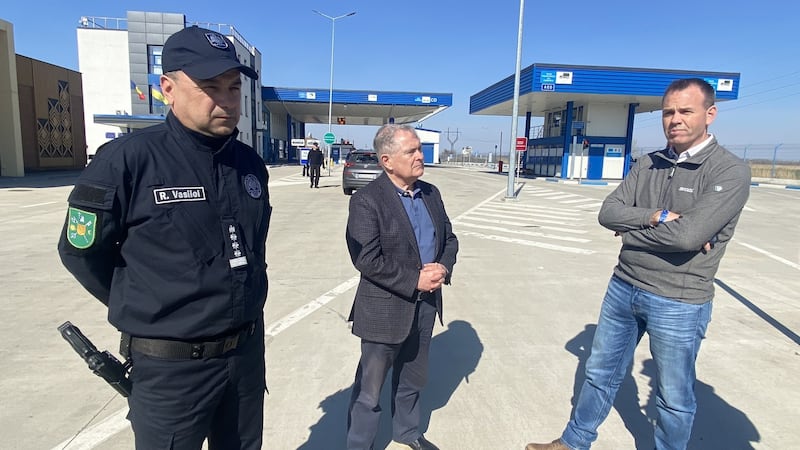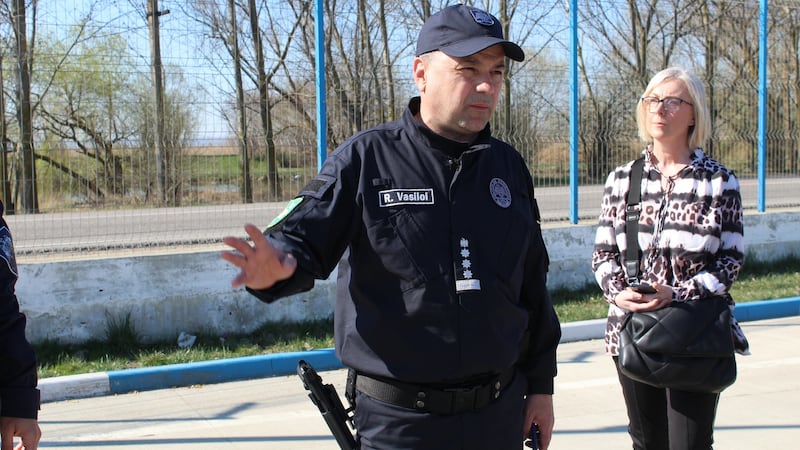Fleeing war in Ukraine, Helen Vinokurova has just crossed the border into Moldova with her mother and two-year-old son Alex.
Exhausted but with an air of relief, the 28-year-old Ukrainian said she has fled Mykolaiv, the Black Sea city under constant attack by Russia’s military.
“It is under fire all the time,” she said.
She has no family in Moldova and is heading to a government-run facility for refugees in the capital Chisinau. She has left behind her husband and brother who are fighting the Russians.
“My husband called at 19.00 – they attacked Mykolaiv,” she said.
This family is one of about 1,700 people crossing into Moldova every day, down from 12,000 who crossed daily last month in the second and third weeks of the war. The queues then stretched back 8km into Ukraine. Three people died while waiting from fatigue and exhaustion.
On Wednesday, a bus will bring Helen and her family to a triage centre and bus station on the west side of Palanca where refugees are brought to Chisinau or beyond to Romania, a richer country that can better manage the greatest movement of refugees in Europe since the second World War.
Others are making their own way.
Boris Diakov has stopped at the border crossing in his white SUV. His infirm 83-year-old mother sits in the backseat as he awaits sign-off from a border guard to bring his mother to her sister in Moldova. He decided to leave Odesa after the Russians bombed a fuel depot last Sunday.
“I am escorting my mother; without me it would not be possible to bring her to Moldova,” he said, explaining why he has been excluded from Ukraine’s ban on military-age men leaving.
He expects Odesa eventually to suffer the same fate as Mariupol, another city further east that has been besiege and bombed by Russia. He is lost for words as to why Moscow is doing this.
“I don’t understand why they are doing this,” he said.

Moldovan border police chief Rosian Vasiloi tells members of the Oireachtas EU affairs committee visiting the Palanca crossing that if Odesa is attacked, they expect 100,000 to cross every day – eight times the previous peak. They will open two additional crossings to cope.
“We are prepared in any situation if there is a change in the frontline or if there is a Russian bombardment of the Odesa region,” he said.
About 700 people are crossing going in the other direction, including women and children returning to areas of Ukraine liberated by the country’s army or men returning to fight.
At the border, Oireachtas members briefed on the situation in Palanca expressed concern at Moldova’s capacity to manage such an influx if the war spreads west.
"They need money and they need it straight away just to deal with the influx of refugees at this point but with 100,000 a day in addition, I would have major concerns," said Sinn Féin foreign affairs spokesman John Brady TD.

Fine Gael senator Regina Doherty said she was struck how Moldova, one of Europe's poorest countries, has shown such generosity in accommodating refugees from Ukraine.
“The most poignant thing we have seen today is families going in both directions: families coming from Ukraine with the smallest of children and the smallest of suitcases, and then probably even more poignantly, families returning under the assumption that it is safe,” she said.
Labour TD Brendan Howlin said the migration of 100,000 a day would "simply overwhelm" the increased capacity of 60 border guards at Palanca, should the Russians edge towards Moldova.
“It is quite clear that the numbers are relatively manageable right now but the fear is what might happen in the event of a frontal assault by Russia on Odesa,” he said.









